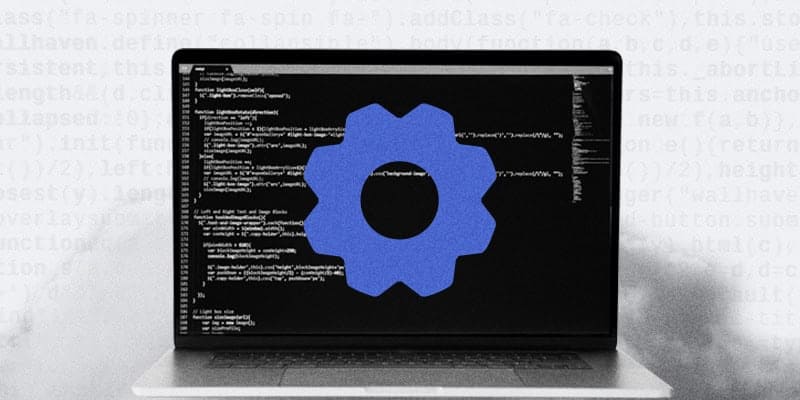Deep automation can optimize DevOps processes, but it can also carry malicious code and injections across dozens of Salesforce environments.
Why It Matters: Automated processes are essential to streamline DevOps processes. However, improperly configured settings within automated tools can lead to data security vulnerabilities in Salesforce.
- Instances like the Home Depot breach show how malicious actors can spread across an environment after breaching only a small section.
- A compromised CI/CD pipeline exposes build history, artifacts, and vulnerability reports.
- Hardcoded credentials are often stored in same place as the code in Version Control, shell scripts, and login files.

Here are 10 ways you can ensure your automated processes don’t compromise data security in Salesforce:
1. Implement Strict Access Controls
The main benefit of incorporating automated processes—autonomous functions that don’t require the intervention of your team—is also a data security concern. Anything malicious that enters an automated cycle is put on the fast track to spread throughout your system. This is why it’s critical that you limit who can access these automated tools.
Multi-factor authentication and strong passwords ensure the people who are able to access your Salesforce environment have the necessary authorization.
Controlling who can access your automated tools ensures that no surprises infect your DevOps processes. And it all starts at the initial login screen.
2. Continually Update User Permissions

Having secure access portals is your first step to ensuring only authorized individuals can access your sensitive information. The next step is updating profile and permissions settings to minimize the risk that a simple mistake could cause a catastrophe.
Every new hire and anyone promoted should only have permission to access the information they need to perform their duties.
Automated tools are available to double-check these settings.This also protects your Salesforce environment; even if an individual’s login credentials are compromised, the intruder will only be able to access those parts of the platform to which the team member has access.
3. Apply Network Segmentation
A primary concern about unauthorized breaches of your Salesforce environment is the infiltrators’ ability to move freely within your system once they gain access. This is also a risk of deep automation—bad code can be pushed across dozens of environments without a team member actually realizing it’s happening.
Installing barriers between various parts of your Salesforce environment prevents individuals from accessing your entire platform, while also preventing automated errors from infecting unseen functions.
Create sub-networks to break down your larger environment into self-contained sections. This can be done in a variety of ways, including VLANs and subnetting.
4. Archive Unused Data
Salesforce is likely your largest container of data. And as time goes on, this wealth of information continues to grow. These data sets may sometimes go unused for long periods of time, but must still be kept on hand to support compliance requirements or other business needs. Failing to clean up this data will complicate many processes and increase the potential for automated errors.
Archiving unused data moves unnecessary but important data to off-site storage, making it still accessible while cleaning up your Salesforce instance.
This process will streamline many DevOps processes as well as protect your system from unreliable data.

5. Conduct Frequent Security Audits
A piece of malicious code that is carried into surrounding environments through automation might go unnoticed for a long time. Many security breaches occur for months without anyone noticing, which gives the actors plenty of time to cause serious damage. Guarding access points is important, but you also need to pay attention to the back end.
Frequent security audits need performed to ensure nothing is compromised since these issues do not always make themselves known.
Not only will regular audits keep your system safe, but they also help those in regulated industries maintain compliance with applicable data security regulations.
6. Monitor Logs and Reports
DevSecOps tools provide many ways to support data security in Salesforce. This includes having the ability to compile information into specialized logs and reports. Access logs, for example, show who has accessed specific parts of your Salesforce instance, where they are, and how long they were there. This type of information can be used to look for outliers and potential breaches.
An unseen intruder could enter malicious code into your automated system that impacts connected environments as well.
Reviewing these logs and reports should be a frequent occurrence. InfoSec teams know the importance of maintaining a current, high-level view of your Salesforce environment, and this is the way to do it.
7. Encrypt Sensitive Data
Any type of data breach—whether through automation or other means—has the potential to expose system data. And when it comes to sensitive data like personal identifiable information (PII), financial data, or medical records, organizations must do all they can to protect it.
Encrypting sensitive data ensures your information is protected, even if an unauthorized individual gains access to a restricted dataset.
Data security in Salesforce requires a multi-layer approach. Encryption is one component of a larger strategy to ensure compliance and support ongoing security.

8. Provide Continuous Training
Employee error is the number one cause of data loss. And when mistakes occur while working with an automated tool, the ramifications have wide-ranging impacts. While it isn’t possible to completely eliminate the potential for human error, continual training gives your team members the information they need to reduce the likelihood it will happen.
Offering updated training on new tools and processes—as well as refresher courses on existing ones—makes costly errors less likely to occur.
Along with instituting continuous training, keeping the lines of communication open encourages team members to ask questions. Avoiding the potential for confusion is another great way of reducing errors.
9. Host On-Premises Training
Cloud computing offers a ton of benefits, particularly as teams are more likely to be working remotely across disparate geographic regions. However, some companies need a higher level of control over their data security in Salesforce. Regulated industries like healthcare and banking should consider hosting their platform on-premises to ensure the greatest control possible over their IT environment.
On-premises hosting makes it easier to defend against bad actors and reduces the potential for data breaches.
Bad code from unauthorized visitors becomes incredibly unlikely when your platform is hosted on-premises. Consider this option if compliance is a major concern for your organization.
10. Source Top-Tier DevOps Tools

Automation has great potential for streamlining Salesforce DevOps processes, but at the same time, it creates data security liabilities. The best DevOps tools work together to minimize the likelihood of these negative outcomes by synergizing efforts to cover blind spots.
A top-tier DevOps suite includes static code analysis and CI/CD tools as well as backup and recovery capabilities.
Automation is a non-negotiable part of an optimized Salesforce DevOps pipeline. However, precautions need to be taken to minimize the chance that automated tools are used to infect your Salesforce environment with bad code. The methods listed above will strengthen your data security in Salesforce and provide the returns you need and expect from your DevOps efforts.
Next Step…
The infrastructure of our environments has a huge impact on data security in Salesforce. And we recently saw an example of how this can go wrong.
Check out our blog, “Misconfigured Settings Lead to Data Leaks in Salesforce Community Websites,” to learn how a large number of organizations recently experienced a data leak.
